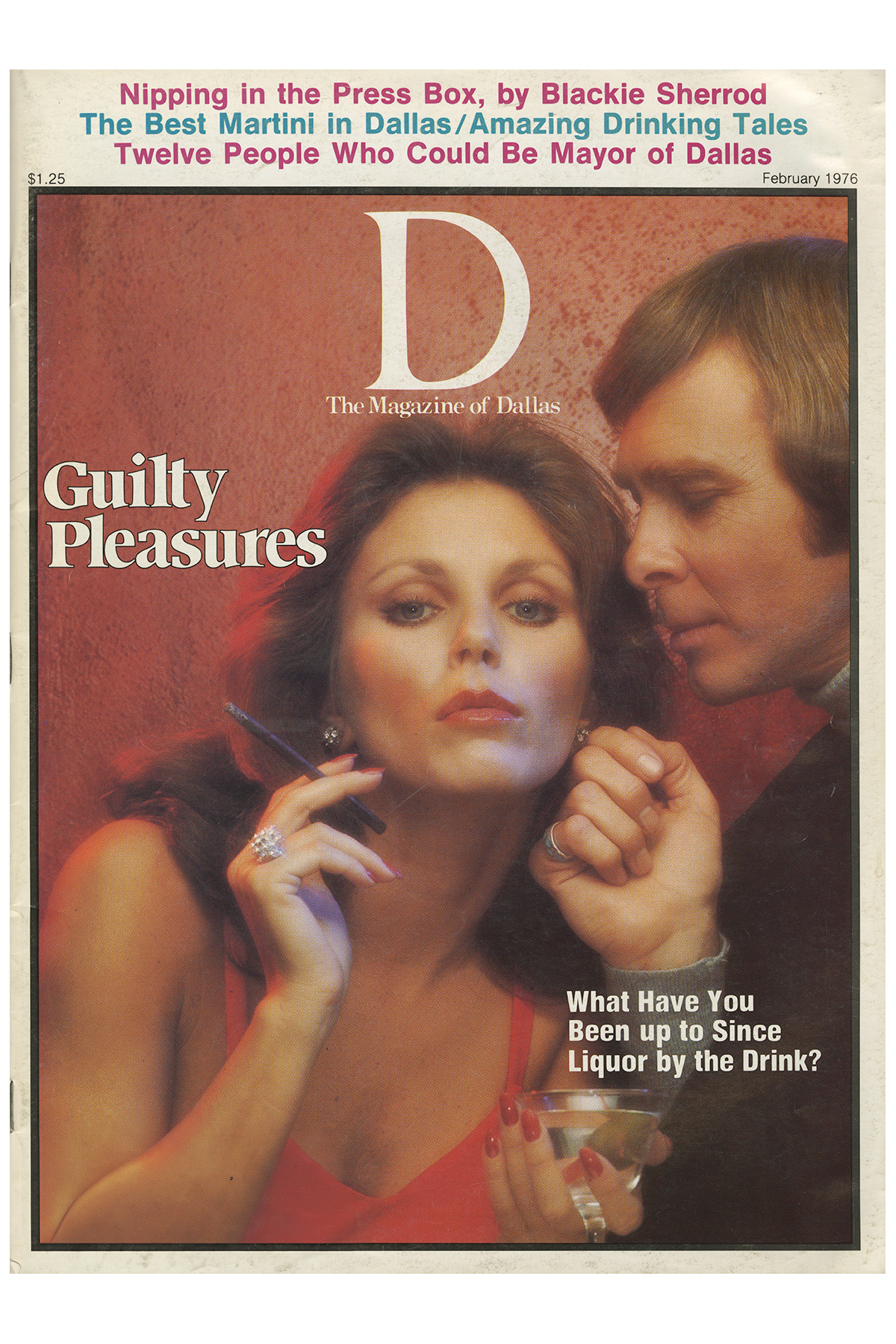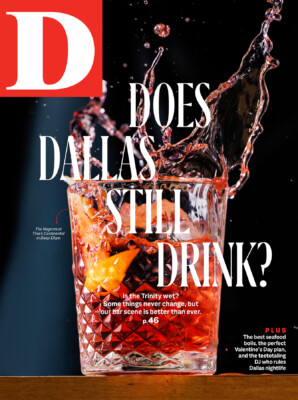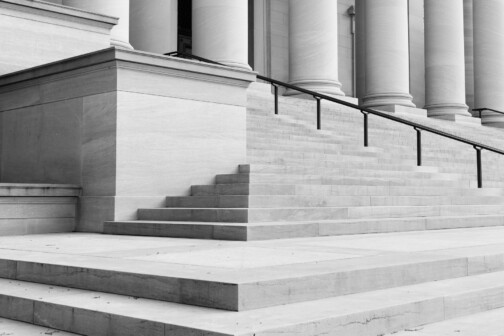Our February 2024 cover feature, “The Ultimate Dallas Bar Crawl,” continues a long tradition of liquid journalism at D Magazine. Yet, the first-ever roundup of bars to grace these glossy pages was not a guide to the “best” or even “very good” but in fact a feature titled “The Meanest Bars in Dallas,” for which one brave writer visited bars so dangerous that the establishment’s best quality might be its close proximity to Baylor hospital.
That was preceded by an April 1975 feature called “The Blind Truth: D’s First Annual Beer Tasting.” It illustrates just how far the local beer scene has come. The judges gave the first and second spots to Dos Equis and Pabst Blue Ribbon, respectively. Perhaps if the editors had had today’s almost 100 brewers on tap, that annual beer tasting might have endured more than just one year.
The first true “best” booze story wasn’t published in D until February 1976, more than a year after the magazine’s debut—a surprising delay considering the editorial staff’s tendency to enjoy a wet lunch and then cap off the workday in a watering hole. In fact, one could argue that the original Chelsea Corner on McKinney was this magazine’s first office.
“You have to understand something,” Tom Stephenson says. “Back in those days, everybody drank at lunch. Not just journalists but politicians, all the people we hung around with. Everybody. If you had an iced tea, you were weird.”
Stephenson was one of D’s prolific contributors in the 1970s, both in terms of writing and running up bar tabs, which earned him the assignment of trying to find the best martini in Dallas for the February 1976 “Guilty Pleasures” issue. He is an old-school journalist, the kind who’s not afraid to get his hands dirty. Literally, he’ll dig through trash. He’ll employ other questionable fact-finding tactics and later argue to his editor, “You don’t have to tell the truth to get the truth.” He’s the kind who sighs when thinking of this magazine’s deceased founder, Wick Allison, and says, “You gotta love an editor who gets you out of jail.” And a journalist who has no qualms knocking on the door of the man who he believed slayed a family in cold blood. These anecdotes all spring from Stephenson’s last story for us, 2018’s “Murder in a Box,” which solved the mystery of the Blue Mound Massacre. All of this to say, when it came to martini tasting, Stephenson and his colleagues “left no turn unstoned,” as the 1976 editor’s letter noted.
The first roundup of bars to grace these glossy pages was not a guide to the “best” or even “very good” but in fact a feature titled “The Meanest Bars in Dallas.”
On one martini outing at Arthur’s, Stephenson was joined by the magazine’s first editor-in-chief, Jim Atkinson, plus a popular Dallas Morning News columnist. As the investigation into cocktail quality proceeded, the columnist began bragging about his championship record in the high school high jump. “He goes, ‘You know I can still clear 5-foot-6,’ ” recalls Stephenson. There was a signpost in the parking lot that seemed to be about that height. “Unfortunately, underneath there was not anything but asphalt to fall on. I had no idea in my mind he might actually make it over.” The columnist did clear the sign, though victory came at a cost. He broke both arms.
So how many martinis does it take to fuel a two-armed snap? “I’d put the over-under at five or six,” Stephenson says. “You know what they say about martinis, don’t you?” Indeed, we do know, because Stephenson used the adage in our magazine 48 years earlier: “Martinis are like breasts. One isn’t enough, and three is too many.”
“I guess I need new material,” he says today.
Sadly, Stephenson is no longer eligible to assist with D’s martini research, a self-disqualification that can be blamed on his firstborn’s well-being. “My life changed when my first son was born, 43 years ago,” he says. Stephenson had sparked a business partnership with the serial restaurateur Gene Street while profiling the then bachelor for the aforementioned “Guilty Pleasures” issue. And so, by the time his first child arrived, in 1980, Stephenson had already closed his Lakewood Yacht Club and opened the shoulder-to-shoulder hot spot Greenville Avenue Country Club, which inspired him to start the Greenville Avenue Parade. (The route ended at his bar’s door.)
“I was in with the doctor, about to deliver the baby, and I was really nervous,” Stephenson says. “I just wanted to make sure he’s born with brains, and he’s got all of his fingers and everything else.” The doctor told him not to worry. But worry, Stephenson did. He worried so much that he made an oath. He swore to the doctor that if everything came out dandy, he’d give up hard liquor for the rest of his life. “Well, whatever,” the doctor replied.
“I’ll give you some advice,” a spirit-free Stephenson says today. “If you ever make a pledge, put a timetable on it.”
This story originally appeared in the February issue of D Magazine with the headline “Liquid Verbiage.” Write to [email protected].
Author








